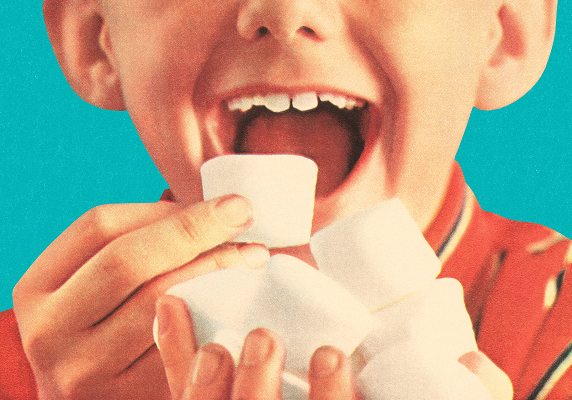Traits tied to success • Entrepreneurial hotspots • Entrepreneurial training • Future directions
Bryan Stacy felt devastated by the 2019 failure of his first business venture—a virtual sexual health clinic launched with financial backing from friends and family. But it didn’t take him long to start another company.
“After the first one, my identity was crushed,” the Brooklyn, NY, entrepreneur said. “I had put my entire life savings into it. I was $70,000 in debt when I closed up. My next move was to start the next business, which sounds insane. But it didn’t feel insane at the time.”
Stacy found success with that follow-up company, Vaheala, which provides COVID-19 testing and tracking for employers. As planned when he launched the venture in 2020, he’s set to shutter the company as the COVID-19 pandemic subsides. And he’s already contemplating his next business endeavor.
Stacy’s resilience in the wake of that initial 2019 failure is a critical trait that researchers have tied to entrepreneurial success. While statisticians debate the true rate of business failures, collectively the data show that roughly half of start-up ventures shut down within 5 years of their launch. A burgeoning assortment of psychological scientists is studying the factors that distinguish successful entrepreneurs from those that falter.
Their work is particularly salient today. The U.S. Census Bureau saw business applications begin to spike in 2020 as side hustlers and laid-off workers—flush with time and savings built up over the pandemic lockdown—took advantage of low interest rates to launch new companies and solo ventures. Startup activity varied from country to country throughout the pandemic, but funding for new businesses soared on a global scale. Venture capitalists poured $683 billion into business ventures in 2021, doubling the amount invested in the previous year.
But the favorable economic winds have slowed over the last year amid rising borrowing costs, throttled supply chains, and inflation. Worldwide, venture capitalists curtailed their investments in new companies by 30% in 2022, reports the National Venture Capital Association. The trends portend a Darwinian environment in the start-up space and could trigger layoffs, debts, and wasted capital. Psychological research is revealing what will help the fittest ventures to survive.
“Society at large benefits when the money invested in entrepreneurial ventures creates new jobs,” said APS Fellow Kelly G. Shaver, who was professor of entrepreneurial studies at the College of Charleston in South Carolina and now runs the consulting firm MindCette. “Society loses when the money invested in entrepreneurial ventures creates failures. So, if there is any way to reduce the percentage of failures, that’s of very broad scientific and societal interest. With up to $344 billion invested in startup companies in a year [in the United States], a 5% reduction in losses turns out to be a pretty sizeable chunk of money.”
Traits tied to success
Scientists in a variety of disciplines have explored key personality and cognitive traits of entrepreneurs. Researchers at Bocconi University in Italy, for example, introduced a cognitive mechanism called “user perspective-taking”—the ability to assume the viewpoint of a market’s potential customers. They found that entrepreneurs who adopted such a perspective showed an enhanced ability to identify market opportunities (Prandelli et al., 2016).
APS Fellow Robert A. Baron of Oklahoma State University and collaborators in Rome and Abu Dhabi observed that business founders appear to possess a special type of entrepreneurial alertness fueled by two aspects of self-control:
- locomotion—the ability to take swift action without distractions or delays; and
- assessment—the capacity to evaluate relevant factors before moving ahead.
The researchers recruited a sample of 120 entrepreneurs on the Italian island of Sardinia and had them respond to questions designed to capture individuals’ proactive tendencies, judgment, and alertness. They found that participants who scored high on locomotion and assessment showed a superior aptitude for scanning market conditions, evaluating opportunities, and making the most profitable choices (Amato et al., 2017).
Related content: It’s Time for Psychological Science to Become More Entrepreneurial
Innovators also tend to excel in planning and adapting, studies suggest. An international team of psychological scientists, including APS William James Fellow Carol Dweck, found that entrepreneurs and other business professionals, along with students and athletes, tend to think more strategically than others when facing challenges. Led by Patricia Chen at the National University of Singapore, the researchers surveyed participants using a six-item scale designed to measure self-efficacy and tactical thinking. They found that people who were best able to adjust their strategic thinking were most successful in achieving their goals (Chen et al., 2020).
A team of psychologists led by Jeffrey M. Pollack of North Carolina State University (NC State) identified networking style as a factor in entrepreneurial performance. They recruited participants from a national business networking group that met weekly to share leads and referrals. They then asked the participants about networking style and the number of face-to-face meetings they had with other group members. They found that participants who focused on seeking out new contacts in the group—as opposed to people who interacted with members they already knew—reported more frequent and sundry interactions. And greater networking correlated with increased business revenue. (Pollack et al, 2014).
Research has also illuminated the role of “need for cognition”—an individual’s attraction to effortful cognitive activity—in driving entrepreneurial activity. Josef Scarantino, a Denver-based professional who has launched several business ventures and advises start-ups, fits that description.
“Since I was very young, I was intrigued by the freedom to build and pursue and create,” Scarantino said. “It’s always been something that stimulated my brain.”
Additionally, research points to a rebellious streak among entrepreneurs. Researchers from Germany and Sweden, using longitudinal data, found that business founders had a history of minor anti-social tendencies in their adolescence. In a data set of 1,000 residents of Sweden tracked over 40 years, social psychologist Martin Obschonka and his colleagues found that eventual entrepreneurs were more likely than others in the sample to have cheated at school, defied their parents, and used drugs regularly. The findings suggest that questioning boundaries in adolescence may be the basis for productive, enterprising risk-taking in adulthood, the researchers said (Obschonka et al., 2013).
Nikki Blacksmith and Mo McClusker, industrial/organization psychologists who founded the Washington, DC-based firm Blackhawke Behavior Science, set out to uncover the relationship between entrepreneurship tasks, human behavior, and business outcomes. The company conducted a massive meta-analysis of studies on the behaviors tied to start-up success.
From this work, Blackhawke developed 12 Pillars of Entrepreneurial Performance that cut across cognitive, motivational, and relational aspects of performing: vision, strategy, resourcefulness, execution, innovation, decision making, collaboration, direction, influence, autonomy, intensity, and tenacity. Blackhawke’s work paints a profile of a successful entrepreneur as someone who recognizes opportunity, marshals the necessary capital and other resources, develops and implements a solid business plan, and continuously improves the product on the basis of market conditions. The innovator also is an influential leader, builds and manages strong relationships, overcomes obstacles, and effectively manages stress.
A key success factor that Blacksmith has identified in her consulting work with startups is team-building ability.
“It’s about not just the product, but also about building a company,” Blacksmith said in an interview on the APS podcast Under the Cortex, “which means you have to bring in the right people, you have to manage them, you have to motivate them, you have to know how to effectively collaborate across people.”
Stacy says he learned the importance of team cohesion while captaining Biem, the sexual health start-up he cofounded with a medical doctor in 2016. Inspired by his diagnosis and treatment for testicular cancer and chlamydia, Stacy designed Biem to provide customers with an app that facilitated access to healthcare providers, tests for sexually transmitted diseases, and contact tracing. But within 3 years after the company’s launch, the partners had nearly exhausted their cash and formed conflicting goals for the business.
“My cofounder said something like, ‘The vision of this is to build up all these physical offices and locations for people across the states,’” Stacy said. “And I said, ‘No, we’re a digital front door to people, and we’re going to work with doctors’ offices that already exist.’ The visions for what the business actually was couldn’t have been more different.”
Stacy’s experience is all too common in new companies, Blacksmith told the Observer.
“The most common reasons start-ups fail come back to the people,” she said. “It comes down to issues like team conflict and poor leadership decisions.”
Entrepreneurial hotspots
Other researchers are examining entrepreneurship from a geographical perspective. Obschonka, who heads the Entrepreneurship and Innovation section at the University of Amsterdam Business School, has worked with economists, data scientists, personality researchers, and other psychological scientists to identify “hotspots” where business start-ups thrive and boost regional economies.
Obschonka and his colleagues used an artificial-intelligence method to examine local indicators of the Big Five personality traits reflected in language patterns on Twitter. They found large hotspots of entrepreneurial personality, characterized as high levels of extraversion, conscientiousness, and openness to experiences and low levels of agreeableness and neuroticism. The hotspots included the East Coast from Massachusetts to Florida; Denver/Boulder; the San Francisco Bay area, Southern California, and the Gulf Coast regions of Louisiana and Mississippi. Importantly, they found a significant overlap between the Twitter-based measures of entrepreneurial personality and actual levels of business start-ups in those hotspots (Obschonka et al., 2018).
Shaver and his collaborators have developed a test to help identify some universal and geographically specific dimensions of entrepreneurship. They have collected survey responses from nationally representative samples in South Africa and Bahrain. These data represent two large, culturally distinct groups—a population made up largely of Black and brown Christians and another comprised of White Muslims.
“It’s actually hard to find two societies that would be more vastly different,” Shaver said in an interview.
Across both countries, Shaver’s team identified confidence, diligence, entrepreneurial desire, innovation, leadership, motives, permanence, self-control, and resilience as the common dimensions among entrepreneurs. MindCette calibrated the scales separately for men and women—a method that Shaver says is all too rare in entrepreneurial research—and found the dimensions evident across both sexes in both countries (Al-Ubaydli et al., 2022).
“The beauty is that in both countries, the nine dimensions significantly distinguish people who are entrepreneurs from people who are not,” Shaver said.
Ostensibly, angel investors would be interested in these data to help identify the start-ups that are likely to succeed over those that face a high risk of failure. But in their consulting work, both Shaver and Blacksmith have encountered a couple of obstacles when sharing their findings. For one, venture capitalists tend to accept a high level of risk when making investment decisions.
“Most venture capitalists take an approach of investing in 10 companies assuming only one is going to become big enough to cover the investments,” Blacksmith said. “That’s a 10% success rate, which seems insane to me. How is this a good process?”
Additionally, funders tend to place undue trust in their instincts when selecting start-ups to back, the consultants reported.
“Their lack of psychological knowledge does not prevent them from making psychological judgments,” Shaver said. “I haven’t been able to convince them that, with their backgrounds in finance, they ought to be examining the finances, not me. And with my background in psychology, I ought to be examining the entrepreneurs, not them.”
Entrepreneurial training
Psychological scientists are also examining entrepreneurship as a teachable practice, rather than just an individual trait. Among the pioneers in entrepreneurial education research are APS Fellow Michael Frese and Michael Gielnik at Leuphana University Lüneburg in Germany.
Frese and his colleagues developed a psychologically focused training program for entrepreneurs in developing countries—all with the aim of helping fight global poverty. In one study, Frese and his collaborators randomly assigned 109 owners of small-to-medium-size businesses in Uganda to receive psychologically focused business training. During the intervention, participants met with a trainer to practice effective strategies for dealing with business obstacles. They learned, for example, the benefits of construing negative feedback as a tool for improving business rather than an impediment.
Over a year, the research team collected data on how well each business performed. They found that participants in the intervention group were making more money and hiring more people compared with those in a control group. Additionally, all five businesses that shuttered during the study were in the control group (Frese et al., 2016).
Frese worked with World Bank economists to test the impact of training for business owners in Togo. The research team recruited 500 small-business operators to undergo personal initiative training designed to foster motivation, innovation, goal setting, resilience, and other mental processes. In four follow-up surveys conducted over 2 years, the researchers found that the business owners who received the personal initiative training had increased their profits by 30%, compared with 11% for a comparison group that received traditional business training (Campos et al., 2017).
Social psychologist Jeni L. Burnette and colleagues at NC State worked with other psychological scientists to test a growth-mindset intervention designed to boost students’ confidence in their entrepreneurial capacity. In a preregistered study, they presented 120 students with video modules showing how time, effort and energy can improve entrepreneurial abilities. Those students subsequently reported greater confidence in their ability to identify business opportunities and create products than a control group of 118 students (Burnette et al., 2020).
Future directions
In their interviews with the Observer, Blacksmith and Shaver pointed to necessary directions for future research on entrepreneurship. Both noted that the money invested in men’s start-up ventures woefully dwarfs the capital going to women entrepreneurs and other minorities, yet scientists have yet to pinpoint ways to counter bias in start-up funding. Blacksmith also sees a need for deepening collaborations between business schools and psychology departments to help potential entrepreneurs better grasp the importance of critical psychosocial business skills such as team building and leadership.
For now, researchers and business developers alike agree that entrepreneurship, far beyond the stereotypical development of apps and gadgets, has significant potential to tackle existential issues like climate change, pandemics, and war. Blacksmith said she’s noticed a rising interest, among both entrepreneurs and their backers, to deliver a valuable impact to society and individuals.
Scarantino reflects that sense of mission.
“My greatest feeling of success,” he said, “is when someone has come to me and said, ‘This program or product you built changed my life.’”
Feedback on this article? Email apsobserver@psychologicalscience.org or login to comment. Interested in writing for us? Read our contributor guidelines.
Al-Ubaydli, O., Shaver, K. G., & Wegelin, J. (2022). A gulf in the Gulf? Gender differences in entrepreneurial mindset in Bahrain. [Paper presentation]. 82nd Annual Meeting of the Academy of Management, Seattle, WA, United States
Amato, C., Baron, R. A., Barbieri, B., Belanger, J. J., & Pierro, A. (2017). Regulatory modes and entrepreneurship: The mediational role of alertness in small business success. Journal of Small Business Management, 55, 27–42. https://doi.org/10.1111/jsbm.12255
Burnette, J. L., Pollack, J. M., Forsyth, R. B., Hoyt, C. L., Babij, A. D., Thomas, F. N., & Coy, A. E. (2020). A growth mindset intervention: Enhancing students’ entrepreneurial self-efficacy and career development. Entrepreneurship Theory and Practice, 44(5), 878–908. https://doi.org/10.1177/1042258719864293
Campos, F., Frese, M., Goldstein, M., Iacovone, L., Johnson, H.C., McKenzie, D., & Mensmann, M. (2017). Teaching personal initiative beats traditional training in boosting small business in West Africa. Science, 357(6357), 1287-1290. https://doi.org/10.1126/science.aan5329
Chen, P., Powers, J.T., Katragadda, K.R., Cohen, G.L., & Dweck, C.S. (2020). A strategic mindset: An orientation toward strategic behavior during goal pursuit. Proceedings of the National Academy of Sciences, 117(25), 14066–14072. https://doi.org/10.1073/pnas.2002529117
Frese, M., Gielnik, M. M., & Mensmann, M. (2016). Psychological training for entrepreneurs to take action contributing to poverty reduction in developing countries. Current Directions in Psychological Science, 25(3), 196–202. https://doi.org/10.1177/0963721416636957
Obschonka, M., Andersson, H., Silbereisen, R. K., & Sverke, M. (2013). Rule-breaking, crime, and entrepreneurship: A replication and extension study with 37-year longitudinal data. Journal of Vocational Behavior, 83(3), 386–396. https://doi.org/10.1016/j.jvb.2013.06.007
Obschonka, M., Lee, N., Rodríguez-Pose, A., Eichstaedt, J., & Ebert, T. (2018). Big Data, artificial intelligence and the geography of entrepreneurship in the United States. Centre for Economic Policy Research Discussion Papers Article 12949. https://ideas.repec.org/p/cpr/ceprdp/12949.html
Pollack, J. M., Forster, W. R., Johnson, P. D., Coy, A., & Molden, D. D. (2014). Promotion- and prevention-focused networking and its consequences for entrepreneurial success. Social Psychological and Personality Science, 6(1), 3–12. https://doi.org/10.1177/1948550614543030
Prandelli, E., Pasquini, M., & Verona, G. (2016). In user’s shoes: An experimental design on the role of perspective taking in discovering entrepreneurial opportunities. Journal of Business Venturing, 31(3), 287–301. https://doi.org/10.1016/j.jbusvent.2016.02.001





